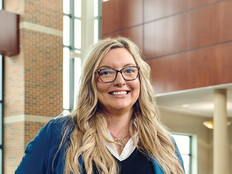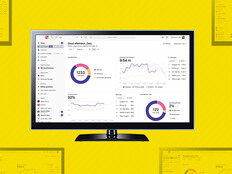How Mobile Devices Move Care Beyond the Bedside
At hospitals and health systems across the country, mobile tools including iPads and smartphones have become increasingly important in delivering patient care to the bedside.
The ability to access patient records on-demand represents one of several needs such technology meets for clinicians. Mobile tools also enable improved collaboration with and communication between doctors, nurses and other care team members, as well as streamlined operational processes, such as patient check-in.
Here is a look at how a few innovative health systems are reaping the benefits of mobile devices.
SIGN UP: Get more news from the HealthTech newsletter in your inbox every two weeks!
Tech Puts the Patient in Control
At the University of California, San Diego's Jacobs Medical Center, iPad devices and Apple TVs are among the tools that help patients take control of their day-to-day care. Patients can use the devices for everything from access to health records via Epic's MyChart to controlling room particulars, such as lights and temperature. The hospital also recently added in-house surveys to the devices.
Jacobs manages all devices via a Jamf interface that allows IT staff to automatically wipe information at the conclusion of a patient's stay.
More than 2,600 miles away, Geisinger Health System also uses Jamf to manage more than 350 iPads and Apple TVs in 100 patient rooms across six facilities, according to AppleInsider. Patients at the Danville, Pa.-based organization can login to access content via their own Apple IDs. Staffers have reported fewer call bells being used partly because patients can control their own surroundings.
Convenience and Collaboration Streamline Care
Meanwhile, in Philadelphia, Jefferson Health's JeffConnect setup makes the care process more seamless for patients, their families and clinicians.
Patients can schedule and participate in on-demand video visits from laptops, tablets and other mobile devices for issues, including cold and flu symptoms, and infections.
Providers, via JeffConnect, can get remote consults from offsite specialty doctors, as well. Hospitals that are part of the Jefferson Neuroscience Network, for example, can receive advice and assistance from Jefferson neurovascular specialists using a robotic system known as Jefferson Expert Teleconsulting.
Patients' family members can virtually participate in the process using videoconferencing technology.
JeffConnect represents a prime example of how bedside care is evolving beyond the walls of any singular hospital.
Whether empowering patients to take control of their surroundings, or giving providers the ability to extend the boundaries of traditional treatment, mobile devices and management technologies have become a vital part of today's care paradigm. Organizations' use of these tools will only continue to grow as patient demands on care delivery transform.
This article is part of HealthTech’s MonITor blog series. Please join the discussion on Twitter by using #WellnessIT.










